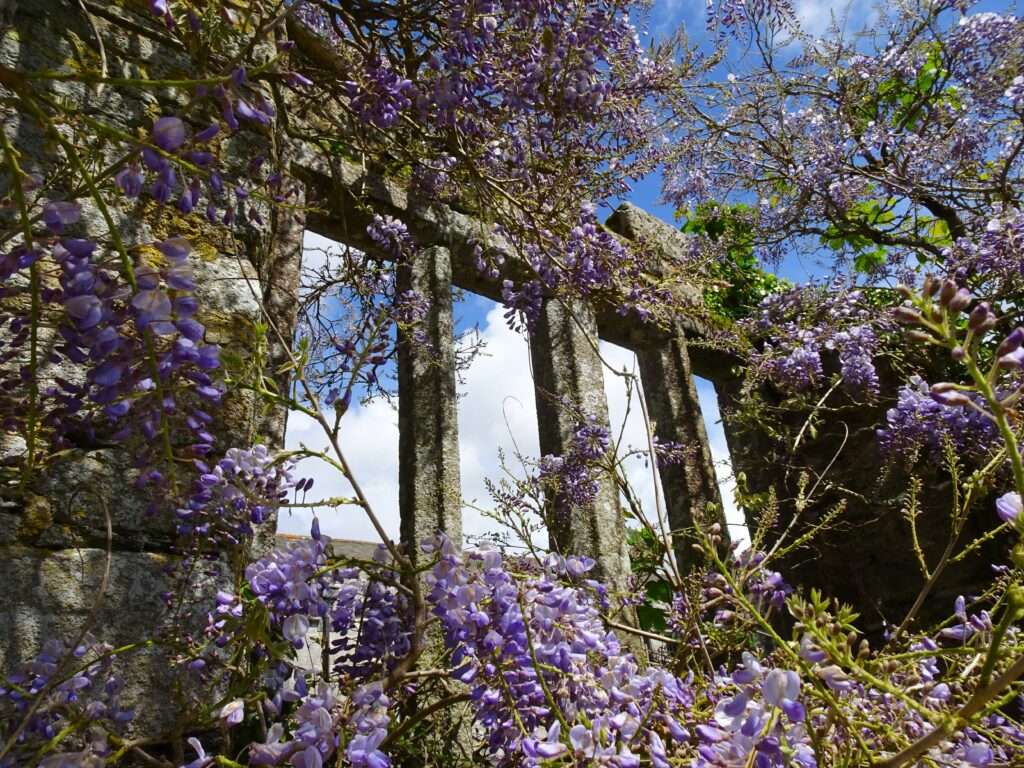Are we in the right place? I asked Mr Word Loft as our car bumped onto an earthen road, with high shrubs on either side. Signs soon confirmed we were at our intended destination. Godolphin – hidden in the countryside – Cornwall’s secret.
The experience is magical in bluebell season. Ribbons of indigo bejewel the undergrowth everywhere, and the perennials’ fairy hat petals seem to glow like strings of lights in the sunshine.
Godolphin is one of Cornwall’s greatest tin and copper mining domains; its records date back to the Norman Conquest. At the front of the property, its castle-style walls are the ruins of the Great Grand Hall. Draped with a curtain of wisteria they make a romantic setting.
Across the courtyard, to the main part of the colonnaded house, I was intrigued by two holes at either end. Inquisitively, I peeped through one and was surprised to see an imposing dining room on the other side. I discovered they are called pistol loops where the barrel of a gun could be thrust out.
Tickets are issued for house entry and at the start of each visit, the guide talks to small parties of people about the estate’s mining history. Unusually, for National Trust locations, it is only open to the public one week of the month. For the rest of the time, the twelve luxury bedroom home where King Charles II was believed to have slept can be hired.
Exploring the house afterwards, it is fascinating to notice past domesticity with present-day essential appliances that meld perfectly.
The back façade looks out over the King’s Garden. Beautiful to behold through the wavy glass, but less formal than when Tudors graced its knot gardens parading in their exquisite costumes.
The grounds further afield have a few surprises. Large ponds that are now dry have quirky wicker fish sculptures situated as if swimming in the dips where the water once flowed. An ingenious idea.
As well as the gardens, there are apple orchards that provided the stock for cider making in the past. The Old Cider House stands in the eastern meadow, having been built in the 18th century and restored recently. Today it provides a space for workshops. The bluebell art created there by the younger fraternity makes a wonderful display pegged on little lines across the room.
Hives at the meadow’s edge provide honey, flavoured with wildflowers, and there is a Barefoot Trail in the woodlands. Thankfully, they aren’t close together, but both are popular.
It’s difficult to visualise the Falmouth to Penzance road passing closely by Godolphin’s windows, or its landscape as a hub of activity with mines situated here and there. Today it is tranquil, a haven for wildlife, and a locale for folk to enjoy.
Best wishes,
Sue. X
PS. The bluebells reminded me of a previous blog post, Beguiling Bluebells that you may wish to read.
